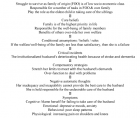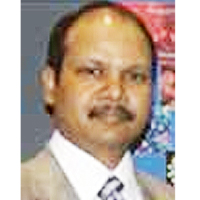Abstract
Brief Communication
Community, health and rehabilitation
Alessandro Giustini*
Published: 14 February, 2023 | Volume 4 - Issue 1 | Pages: 001-003
The problems of guaranteeing the best possible social and health services in every part of the world to combat any form of disability and limitation of participation for all, as indicated by international ethical-political documents, are still very great. A critical point that could favour this progress is to enhance the integration between the growing potential of rehabilitation science (medical and clinical evidence, technologies, and training of numerous operators..) and the ability of communities as a whole to stimulate, support and qualify these interventions with the participation of citizens (families, neighbours and associations) who can voluntarily actively carry out important synergistic actions in many fields. This could develop in any socio-economic condition; in developed ones supporting and finalizing any treatment in common life and in developing countries offering competencies and knowledge to the strong funding actions of community projects aimed at populations with disabilities in this part of the World. The community of rehabilitation professionals, national governments and rulers, and international institutions (UN, WHO..) must well understand this aspect and make it their own in training, in the definition of care protocols, in the definition of the organization of socio-health and rehabilitation systems in each country in relation to the different local economic and cultural conditions.
Read Full Article HTML DOI: 10.29328/journal.jcmhs.1001025 Cite this Article Read Full Article PDF
References
- Pan American Health Organization / World Health Organization, United States Agency for International Development. Analysis of the health sector. A tool to make policy formulation viable. Methodological guidelines. 2006.
- Cieza A. Rehabilitation the Health Strategy of the 21st Century, Really? Arch Phys Med Rehabil. 2019 Nov;100(11):2212-2214. doi: 10.1016/j.apmr.2019.05.019. Epub 2019 May 22. PMID: 31128114.
- Giustini A, Von Groote PM, Christodoulou N, Michail X, Vanderstraeten G. Disability and human rights: the World Report on Disability as a unique opportunity to review and enrich European health policy. Eur J Phys Rehabil Med. 2012 Jun;48(2):179-88. Epub 2012 Apr 17. PMID: 22510679.
- Jolley E, Lynch P, Virendrakumar B, Rowe S, Schmidt E. Education and social inclusion of people with disabilities in five countries in West Africa: a literature review. Disabil Rehabil. 2018 Nov;40(22):2704-2712. doi: 10.1080/09638288.2017.1353649. Epub 2017 Jul 14. PMID: 28705016.
- Howard-Wilsher S, Irvine L, Fan H, Shakespeare T, Suhrcke M, Horton S, Poland F, Hooper L, Song F. Systematic overview of economic evaluations of health-related rehabilitation. Disabil Health J. 2016 Jan;9(1):11-25. doi: 10.1016/j.dhjo.2015.08.009. Epub 2015 Sep 14. PMID: 26440556.
- Krug E, Cieza A. Strengthening health systems to provide rehabilitation services. Bull World Health Organ. 2017 Mar 1;95(3):167. doi: 10.2471/BLT.17.191809. PMID: 28250526; PMCID: PMC5328120.
- Stucki G, Bickenbach J. Functioning: the third health indicator in the health system and the key indicator for rehabilitation. Eur J Phys Rehabil Med. 2017 Feb;53(1):134-138. doi: 10.23736/S1973-9087.17.04565-8. Epub 2017 Jan 24. PMID: 28118696.
- Rehabilitation in Health Systems. 2018.
- WHO and Institute for Health Metrics and Evaluation. Global estimates of the need for rehabilitation based on the Global Burden of Disease study 2019. 2020.
- Rehabilitation 2030 call for Action. 2017.
- WHO. Rehabilitation in Health Systems. 2018.
Figures:
Similar Articles
-
Rural adolescent health: Issues, behaviors and self-reported awarenessMolly Jacobs*. Rural adolescent health: Issues, behaviors and self-reported awareness. . 2020 doi: 10.29328/journal.jcmhs.1001001; 1: 001-017
-
The role of islamic lifestyle and healthy nutrition in accordance with the recommendations of islam and the holly quran by focusing on the risk of cancer incidentRoya Dolatkhah*,Pooneh Jabbaripour,Mohammad Hossein Somi,Ali Roshani. The role of islamic lifestyle and healthy nutrition in accordance with the recommendations of islam and the holly quran by focusing on the risk of cancer incident. . 2020 doi: 10.29328/journal.jcmhs.1001002; 1: 018-022
-
How the COVID-19 outbreak affected physician-patient relationshipRoya Dolatkhah*,Ali Fakhari,Keivan Fakhari Dehkharghani. How the COVID-19 outbreak affected physician-patient relationship. . 2020 doi: 10.29328/journal.jcmhs.1001003; 1: 023-025
-
Assessment of knowledge, practice and associated factors towards prevention of novel corona virus among clients attending at Debre Tabor General Hospital, Debre Tabor Town, North West Ethiopia, 2020: Institutional based cross-sectional studyTigabu Desie Emiru*,Tekalign Amera Birlie,Sheganew Fetene Tasew,Abraham Tsedalu Amare,Nigusie Selomon Tibebu,Chalie Marew Tiruneh. Assessment of knowledge, practice and associated factors towards prevention of novel corona virus among clients attending at Debre Tabor General Hospital, Debre Tabor Town, North West Ethiopia, 2020: Institutional based cross-sectional study. . 2020 doi: 10.29328/journal.jcmhs.1001004; 1: 026-034
-
Utilization of midwives service scheme among women farmers in Southwestern NigeriaOluwasusi JO*,Thomas KA,Olujide MG,Oluwasusi YO. Utilization of midwives service scheme among women farmers in Southwestern Nigeria. . 2020 doi: 10.29328/journal.jcmhs.1001005; 1: 035-046
-
Facing biological risk in child and adolescence neuropsychiatric services during COVID-19 outbreak: Management of protection levels for the direct accessMaria L Tossali*,Carlo Di Brina,Morena Tafuro,Marco Marcelli,Teresa Sebastiani. Facing biological risk in child and adolescence neuropsychiatric services during COVID-19 outbreak: Management of protection levels for the direct access. . 2020 doi: 10.29328/journal.jcmhs.1001006; 1: 047-048
-
Suicide in teenagers during the COVID-19 pandemic in Cuba: actions for its preventionMaydell Pérez Inerárity*,Claudia Elvira Casamayor Leiza,Julio César Pérez Yero,Brayan Chávez Miguel. Suicide in teenagers during the COVID-19 pandemic in Cuba: actions for its prevention. . 2021 doi: 10.29328/journal.jcmhs.1001007; 2: 001-006
-
Institutional capacity of health care institutes for diagnosis and management of common genetic diseases - A study from a north coastal district of Andhra PradeshKoteswara Rao Pagolu*,T Raghava Rao. Institutional capacity of health care institutes for diagnosis and management of common genetic diseases - A study from a north coastal district of Andhra Pradesh. . 2021 doi: 10.29328/journal.jcmhs.1001008; 2: 007-013
-
Neo communicable disease rather than ‘non’ communicable disease for the acronym “NCD”APR Aluwihare*. Neo communicable disease rather than ‘non’ communicable disease for the acronym “NCD”. . 2021 doi: 10.29328/journal.jcmhs.1001009; 2: 014-014
-
Epidemiological profile of the homeless population assisted by voluntary initiative and the social impact on access to healthcare: an investigative study in Curitiba, BrazilFrancelise Bridi Cavassin*,Rafael Senff Gomes,Luiza Cardoso de Lima Passoni,Ricardo Sirigatti. Epidemiological profile of the homeless population assisted by voluntary initiative and the social impact on access to healthcare: an investigative study in Curitiba, Brazil. . 2021 doi: 10.29328/journal.jcmhs.1001010; 2: 015-020
Recently Viewed
-
A study of coagulation profile in patients with cancer in a tertiary care hospitalGaurav Khichariya,Manjula K*,Subhashish Das,Kalyani R. A study of coagulation profile in patients with cancer in a tertiary care hospital. J Hematol Clin Res. 2021: doi: 10.29328/journal.jhcr.1001015; 5: 001-003
-
Viral meningitis in pregnancy: A case reportRuth Roseingrave*,Savita Lalchandani . Viral meningitis in pregnancy: A case report. Clin J Obstet Gynecol. 2020: doi: 10.29328/journal.cjog.1001063; 3: 121-122
-
Vaginal and endometrial metastasis of primary cutaneous malignant melanomaMaria Boia Martins*,Francisca Morgado,Nuno Oliveira,Filomena Ramos. Vaginal and endometrial metastasis of primary cutaneous malignant melanoma. Clin J Obstet Gynecol. 2020: doi: 10.29328/journal.cjog.1001062; 3: 120-120
-
Universal testing for severe acute respiratory syndrome coronavirus 2 upon admission to three labor and delivery units in Santa Clara County, CASophia Yang,Rishi Bhatnagar,James Byrne,Andrea Jelks*. Universal testing for severe acute respiratory syndrome coronavirus 2 upon admission to three labor and delivery units in Santa Clara County, CA. Clin J Obstet Gynecol. 2020: doi: 10.29328/journal.cjog.1001060; 3: 109-113
-
Pregnancy complicated with deficiency of antithrombin: Review of current literatureMiroslava Gojnic,Zoran Vilendecic,Stefan Dugalic,Igor Pantic,Jovana Todorovic,Milan Perovic,Mirjana Kovac,Irena Djunic,Predrag Miljic,Jelena Dotlic*. Pregnancy complicated with deficiency of antithrombin: Review of current literature. Clin J Obstet Gynecol. 2020: doi: 10.29328/journal.cjog.1001059; 3: 103-108
Most Viewed
-
Evaluation of Biostimulants Based on Recovered Protein Hydrolysates from Animal By-products as Plant Growth EnhancersH Pérez-Aguilar*, M Lacruz-Asaro, F Arán-Ais. Evaluation of Biostimulants Based on Recovered Protein Hydrolysates from Animal By-products as Plant Growth Enhancers. J Plant Sci Phytopathol. 2023 doi: 10.29328/journal.jpsp.1001104; 7: 042-047
-
Sinonasal Myxoma Extending into the Orbit in a 4-Year Old: A Case PresentationJulian A Purrinos*, Ramzi Younis. Sinonasal Myxoma Extending into the Orbit in a 4-Year Old: A Case Presentation. Arch Case Rep. 2024 doi: 10.29328/journal.acr.1001099; 8: 075-077
-
Feasibility study of magnetic sensing for detecting single-neuron action potentialsDenis Tonini,Kai Wu,Renata Saha,Jian-Ping Wang*. Feasibility study of magnetic sensing for detecting single-neuron action potentials. Ann Biomed Sci Eng. 2022 doi: 10.29328/journal.abse.1001018; 6: 019-029
-
Pediatric Dysgerminoma: Unveiling a Rare Ovarian TumorFaten Limaiem*, Khalil Saffar, Ahmed Halouani. Pediatric Dysgerminoma: Unveiling a Rare Ovarian Tumor. Arch Case Rep. 2024 doi: 10.29328/journal.acr.1001087; 8: 010-013
-
Physical activity can change the physiological and psychological circumstances during COVID-19 pandemic: A narrative reviewKhashayar Maroufi*. Physical activity can change the physiological and psychological circumstances during COVID-19 pandemic: A narrative review. J Sports Med Ther. 2021 doi: 10.29328/journal.jsmt.1001051; 6: 001-007

HSPI: We're glad you're here. Please click "create a new Query" if you are a new visitor to our website and need further information from us.
If you are already a member of our network and need to keep track of any developments regarding a question you have already submitted, click "take me to my Query."


















































































































































